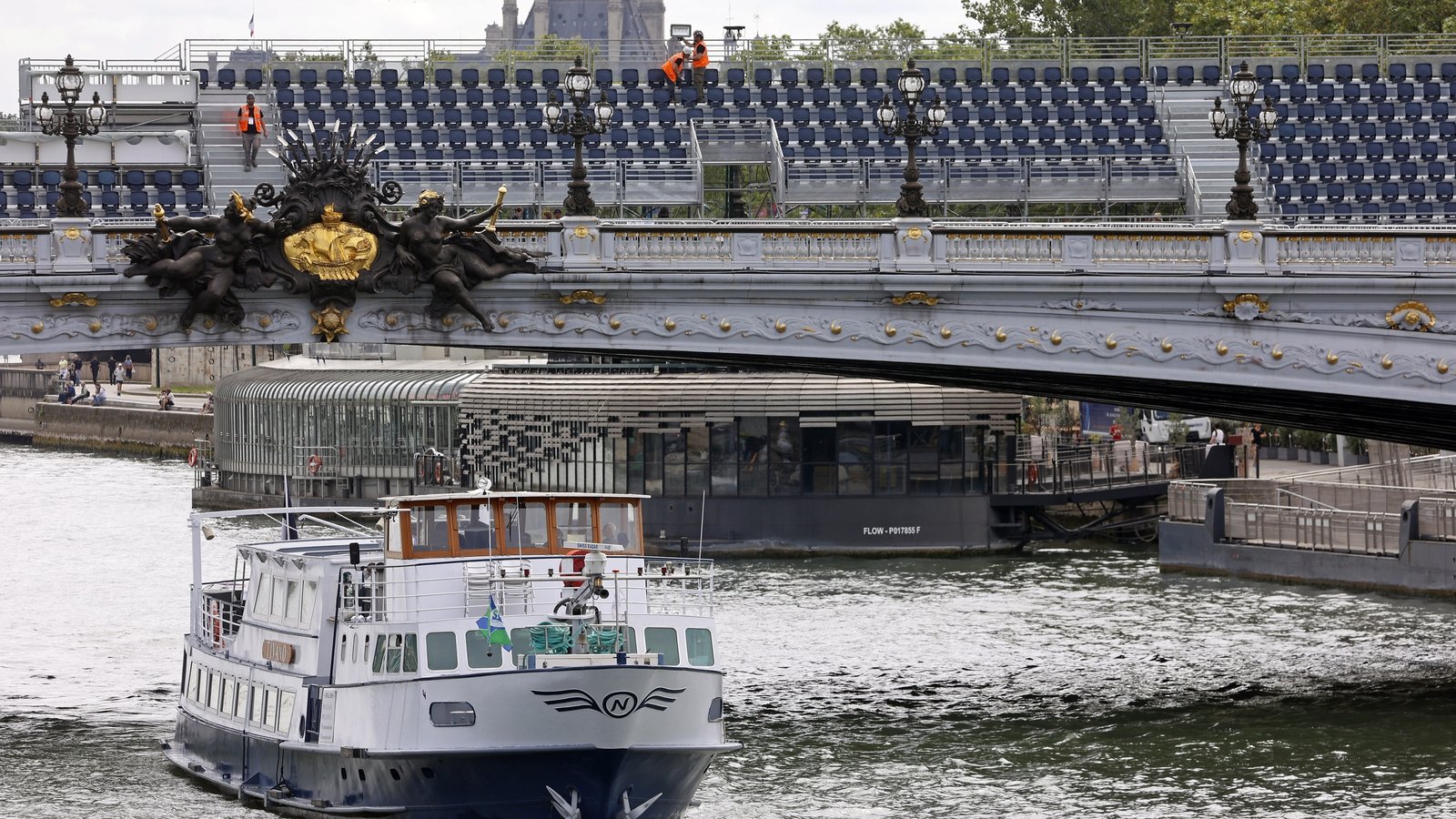Sports
River Seine unfit for swimming one month from Olympics

The river Seine is still failing water quality tests one month before the Paris Olympics when it is scheduled to host the open-water swimming competition and the swimming leg of the triathlon, results showed.
The latest tests, completed last week and released by the Paris mayor’s office, showed levels of the E.Coli bacteria – an indicator of faecal matter – are far above the upper limits imposed by sports federations.
On 18 June, the level of E.Coli was 10 times acceptable levels and at no point did it fall below the upper limit of 1,000 colony-forming units per 100 millilitres (cfu/ml) used by the World Triathlon Federation.
The readings for enterococci bacteria were better, but they were still at unsafe levels for several days last week.
“Water quality remains degraded because of unfavourable hydrological conditions, little sunshine, below-average seasonal temperatures and upstream pollution,” the mayor’s office said in a statement.
French authorities have spent €1.4 billion in the last decade trying to clean up the river by improving the Paris sewerage system, as well as building new water treatment and storage facilities.
But major storms still overwhelm the capital’s waste water network, some of which dates back to the 19th century, leading to discharges of untreated sewage directly into the river.
After months of unusually wet weather, the Seine is currently high up its banks, with its flow around four to five times higher than its usual level in the summer months, according to recent readings.
Organisers insist that some dry weather and sunshine in July should be sufficient to make the Seine fit for the outdoor swimming events.
Bygone days of Seine swimming
17th-century skinny dipping
In the 17th century, before the revolution that toppled the monarchy, bathing in the Seine was a fashionable pastime – and one that was often conducted naked.
By the end of the century, skinny dipping had been outlawed, but Seine swimming remained very popular, with floating pools installed along the banks.
The most famous of these was the Deligny pool, erected in 1801 on a dozen barges and named after one of the first lifeguards to give bankside lessons.
There were some 20 such spots at various points along the river by the end of the 19th century, before they all fell into disuse with the arrival of land-based pools.
1923: banned
Some diehards continued to slip on their speedos until the practice was officially banned in 1923 due to dangers from river traffic and pollution.
Still today, a brigade patrols the waters for any divers.
At times exceptions have been made for Seine swimming, including during heatwaves in the 1940s and official races.

1988: Mayor’s promise
When 5,000 pike were released in the river in 1988, Jacques Chirac as mayor of Paris declared that in five years, Parisians would again be able to swim in the Seine.
“I’ll come with towels and antibiotics,” quipped the environment minister at the time, Brice Lalonde.
Chirac repeated his pledge two years later in an interview on French television, adding that he would personally take a public dip in 1993, though he never did.
2024: Olympic comeback
Current Paris Mayor Anne Hidalgo revived the dream when bidding for the French capital to get the 2024 Games, promising triathlon events in the Seine.
She also added another goal, to install permanent swimming areas for the general public after 2024.
Like Chirac, Hidalgo said she would jump in herself to mark the year of the Games.
The plan has hit some snags.
An open water swimming World Cup event scheduled in August 2023 was cancelled because heavy rain caused sewers to overflow, sparking a temporary rise in bacteria levels.
And this morning, results released by the Paris mayor’s office showed the river was still failing water quality tests one month before the Olympics.
2025: free for all?
If all does go to plan, from 2025 the public will be able to swim in the Seine at three sites: one near Notre Dame, another near the Eiffel Tower and a third in Bercy, a quieter neighbourhood in the east.
The three designated stretches of water will be cordoned off, monitored and accessible via a pontoon.
A major project is under way to improve water collection management – a key feature of which involves building a massive underground rainwater storage tank near Austerlitz train station to hold excess waste water to ensure it does flow into the Seine, as it does now.










